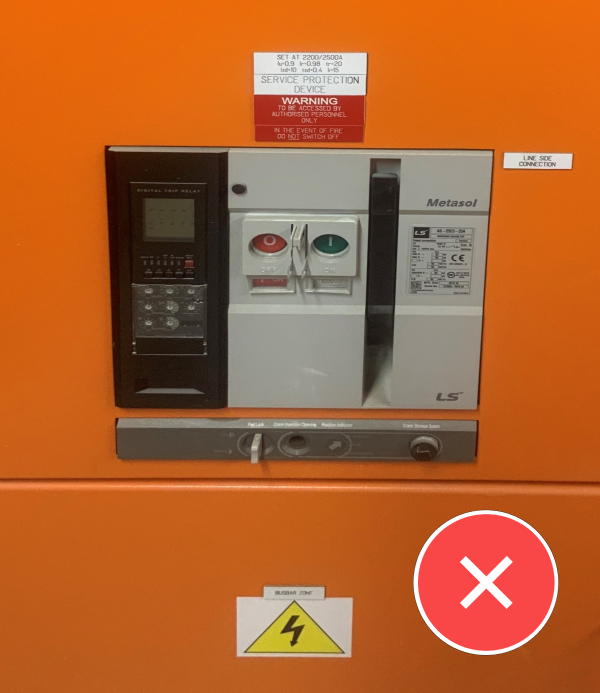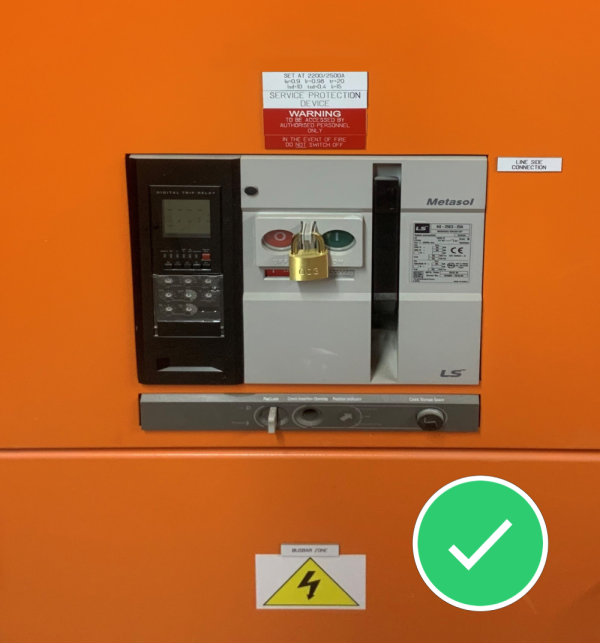Related information and links
| Advisory note | 3/2021 |
|---|---|
| For | Licensees / Contractors / the Electrical Industry |
| Scope | Applies to all areas in New South Wales |
Purpose
The purpose of this advisory note is to inform industry of some common non compliances found when Fair Trading inspectors conduct inspections of electrical metering installations.
What is the non-compliance?
Clause 2.3.3.2 of AS/NZS 3000 Wiring Rules states that the supply to every electrical installation shall be controlled on the main switchboard by a main switch or switches that control the whole of the electrical installation. If not correctly arranged the service protection device (SPD) can be considered the main switch as it controls the whole of the electrical installation.
The Service and Installation Rules requires that the SPD is installed on the line side of any metering.
Note: Depending upon the incoming supply, the SPD can be a fuse or circuitbreaker, in this case the non-compliance applies when a circuit-breaker is used as the SPD and there are safety services supplied from the switchboard.
The Wiring Rules states that safety services shall be controlled by a main switch that is separate from the main switch used to control any part of the general installation and connected to the supply side of all general electrical installation main switches. Hence the requirement to ensure an arrangement that the SPD cannot be mistaken as the main switch and operated in an emergency.
How to comply
AS/NZS 3000 Wiring Rules
In accordance with the note under Clause 7.2.3.4 and exception 2 of clause 7.2.4.2, it is required that the SPD is clearly labelled for operation by authorized personnel only and locked in the “on” position.
Clause 7.2.4.4 Identification requires all switches operating in the supply circuit to safety services shall be clearly identified to indicate the safety service they control:
(b) marked ‘IN THE EVENT OFF A FIRE, DO NOT TURN OFF’ (in upper case); and
(c) identified by contrast in colouring or other suitable means, in accordance with Clause 2.3.3.4
What we are finding
The requirement to have the SPD locked in the “on” position and suitably labelled for authorised personnel only on the main switchboards which have safety services is not complied with. Other required labelling is also missing.

In this example, the SPD is energised and identified that it controls safety services by the label ‘IN THE EVENT OFF FIRE DO NOT TURN OFF’ in contrasting colour.
Safety services are connected to the load side of the service protective device with the general electrical installation and shall satisfy Exception 2 to Clause 7.2.4.2. The SPD is marked for ‘ACCESSED BY AUTHORISED PERSONNEL ONLY’ but is not locked in the on position.
Safety services can be connected to the supply side of the SPD, but as defined the SPD is installed to interrupt the supply to an electrical installation from the service/consumer mains.

The SPD is now locked in the on position and is now compliant. The lock is not required to be a distributor’s lock and the key should be made readily accessible to enable the operation of the SPD if work or maintenance on the main switchboard is required or any other times the SPD would need to be operated.
Storing the key with building management or in a suitable location within the main switchroom are some suggestions where the key can be readily available. This arrangement would apply to any downstream devices on the main switchboard that has safety services connected on the load side of the device with the general electrical installation.
If safety services are located on a separate switchboard in an outbuilding or fire separated portions of a building, the circuit protection devices on the main switchboard only need to be labelled. Locking is not required, and the circuit protective device would be under the control of the main switch.
Reference: AS/NZS 3000:2018 Wiring Rules